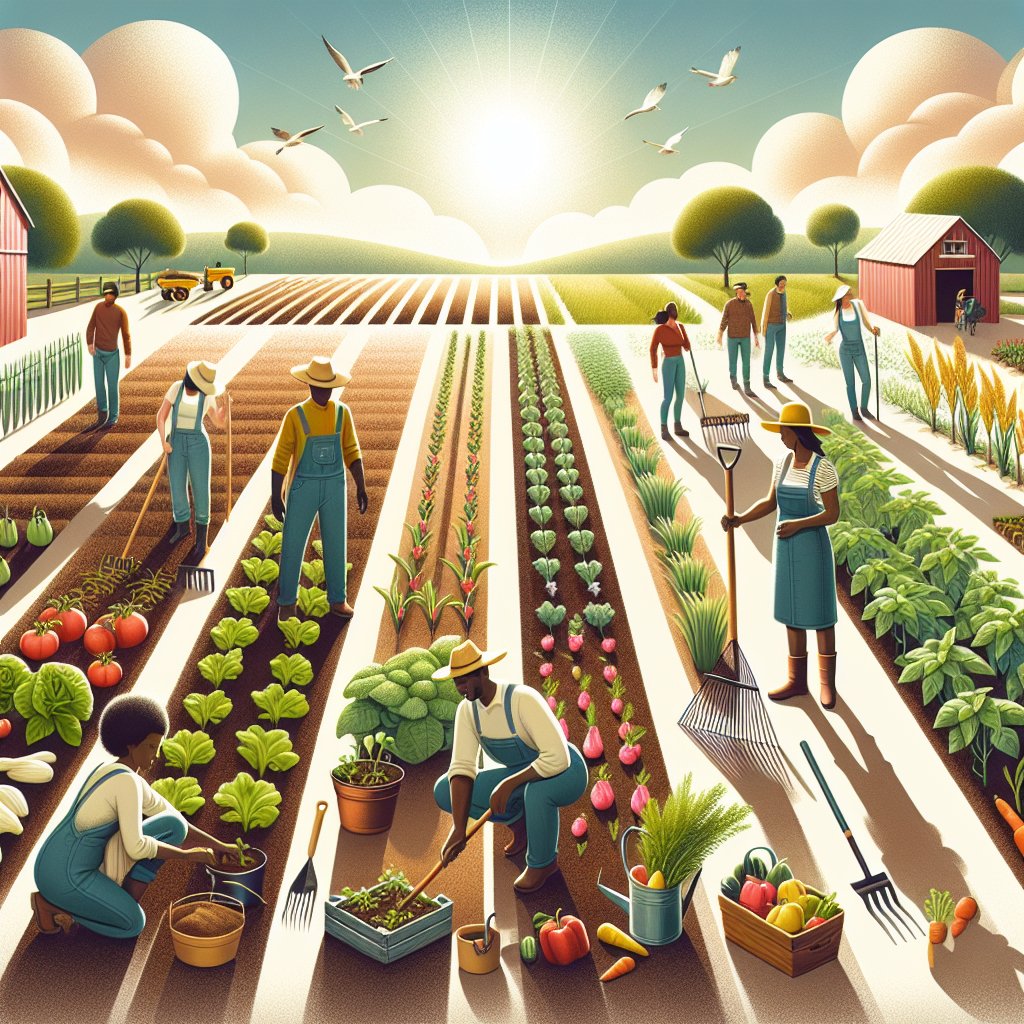
Rotational cropping is a time-tested agricultural practice that offers numerous benefits for improving soil health. By alternating different types of crops in the same area across different seasons or years, farmers can enhance soil fertility, reduce pest and disease cycles, and promote biodiversity. This article delves into the various advantages of rotational crops and how they contribute to sustainable farming practices.
Enhancing Soil Fertility
One of the primary benefits of rotational cropping is its ability to enhance soil fertility. Different crops have varying nutrient requirements and contribute differently to the soil. For instance, legumes such as beans and peas have the unique ability to fix atmospheric nitrogen into the soil through a symbiotic relationship with rhizobia bacteria. This process enriches the soil with nitrogen, a crucial nutrient for plant growth, and reduces the need for synthetic fertilizers.
By rotating legumes with other crops like cereals, which are heavy nitrogen consumers, farmers can maintain a balanced nutrient profile in the soil. This natural replenishment of nutrients not only reduces the dependency on chemical fertilizers but also minimizes the risk of nutrient leaching into water bodies, thus protecting the environment.
Moreover, rotational cropping helps in maintaining the organic matter content of the soil. Different crops contribute varying amounts of organic residues, which decompose and add to the soil’s organic matter. This organic matter is vital for maintaining soil structure, water retention, and microbial activity, all of which are essential for healthy plant growth.
Breaking Pest and Disease Cycles
Another significant advantage of rotational cropping is its effectiveness in breaking pest and disease cycles. Continuous cultivation of the same crop can lead to the buildup of specific pests and diseases that target that crop. Over time, this can result in severe infestations and yield losses.
By rotating crops, farmers can disrupt the life cycles of pests and pathogens. For example, if a particular pest thrives on a specific crop, planting a different crop in the next season can starve the pest population, reducing its numbers. Similarly, many soil-borne diseases are host-specific, and changing the crop can prevent these pathogens from establishing a foothold.
This natural method of pest and disease control reduces the need for chemical pesticides, which can have harmful effects on the environment and human health. It also helps in managing resistance, as pests and pathogens are less likely to develop resistance to a diverse range of crops compared to a single crop.
Promoting Biodiversity
Rotational cropping plays a crucial role in promoting biodiversity both above and below the soil surface. By growing a variety of crops, farmers can create a more diverse ecosystem that supports a wide range of organisms. This diversity is beneficial for several reasons.
Above ground, a variety of crops can attract different pollinators and beneficial insects, which can help in natural pest control and improve pollination rates. Below ground, different crops support diverse microbial communities, which are essential for nutrient cycling and soil health.
Furthermore, crop diversity can improve resilience to environmental stresses such as droughts, floods, and temperature extremes. A diverse cropping system is more likely to withstand adverse conditions compared to a monoculture, where the failure of a single crop can lead to significant economic losses.
Improving Soil Structure and Erosion Control
Rotational cropping can also improve soil structure and help in controlling erosion. Different crops have different root structures, which can influence soil properties. For example, deep-rooted crops like alfalfa can break up compacted soil layers, improving aeration and water infiltration. This can enhance the soil’s ability to support plant growth and reduce the risk of waterlogging.
Additionally, crops with extensive root systems can help in binding the soil, reducing the risk of erosion by wind and water. Cover crops, which are often used in rotational systems, provide ground cover that protects the soil surface from erosion and helps in retaining soil moisture.
By improving soil structure and reducing erosion, rotational cropping contributes to long-term soil health and productivity. This is particularly important in areas prone to soil degradation, where maintaining soil integrity is crucial for sustainable agriculture.
Conclusion
In conclusion, rotational cropping is a powerful tool for improving soil health and promoting sustainable agriculture. By enhancing soil fertility, breaking pest and disease cycles, promoting biodiversity, and improving soil structure, rotational crops offer a holistic approach to farming that benefits both the environment and the farmer. As the agricultural sector faces increasing challenges from climate change and resource constraints, adopting practices like rotational cropping will be essential for ensuring food security and environmental sustainability.

